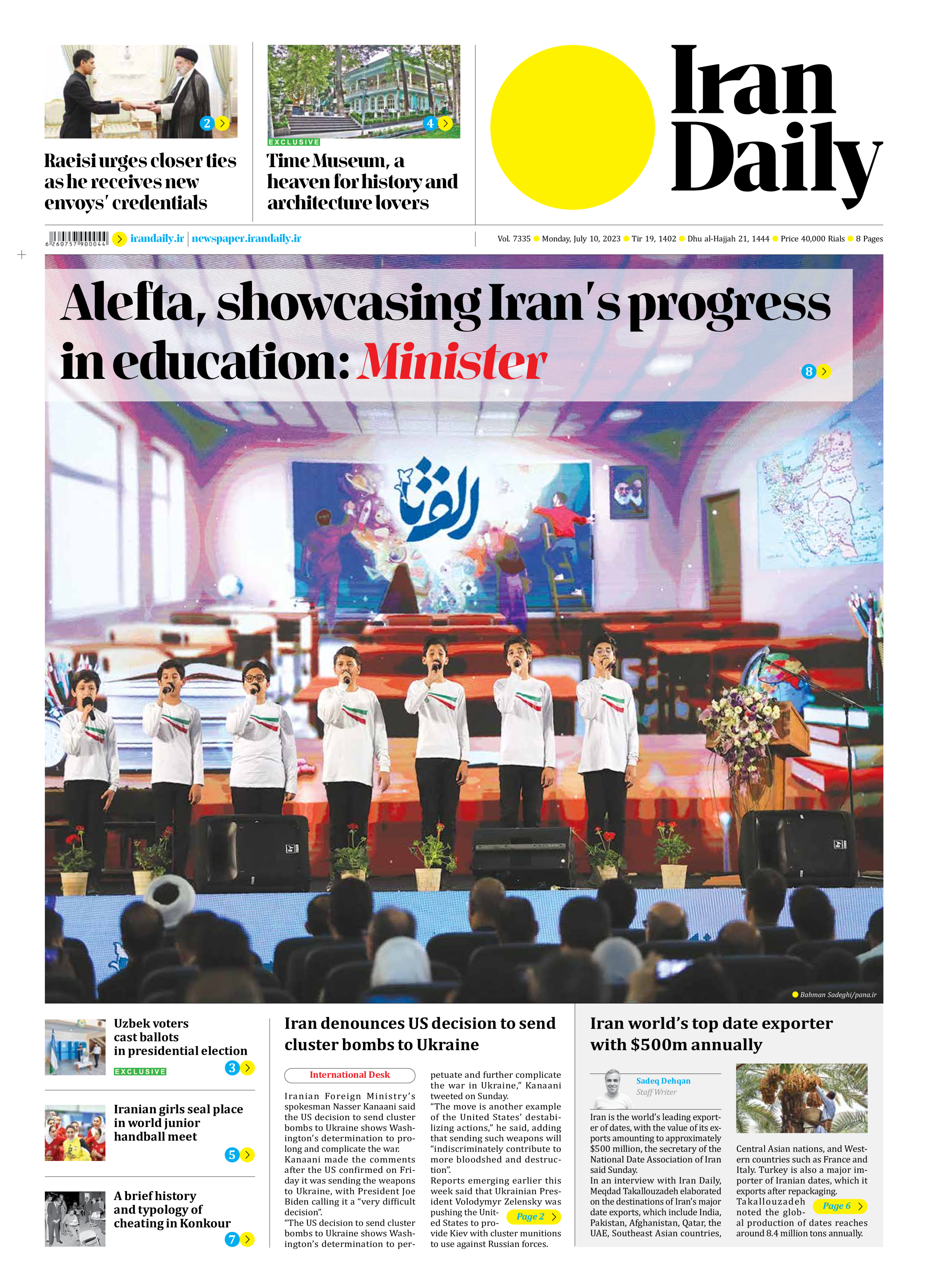
Iran world’s top date exporter with $500m annually
Sadeq Dehqan
Staff Writer
Iran is the world’s leading exporter of dates, with the value of its exports amounting to approximately $500 million, the secretary of the National Date Association of Iran said Sunday.
In an interview with Iran Daily, Meqdad Takallouzadeh elaborated on the destinations of Iran’s major date exports, which include India, Pakistan, Afghanistan, Qatar, the UAE, Southeast Asian countries, Central Asian nations, and Western countries such as France and Italy. Turkey is also a major importer of Iranian dates, which it exports after repackaging.
Takallouzadeh noted the global production of dates reaches around 8.4 million tons annually.
Egypt claims the largest share in global date production (not exports), accounting for approximately 20%, followed by Iran and Saudi Arabia in the second and third positions, respectively.
The primary consumers of dates worldwide are predominantly Muslims. While Islamic nations are recognized as the major producers of dates globally, they also consume significant quantities of this sweet fruit.
There has been an increasing trend in date production within Iran in recent years.
“The country’s date production in orchards has risen from 750K tons to 1,500K tons over the past decade. Typically more than 75% of date production is consumed domestically, while the remaining portion is exported to other countries,” Takallouzadeh explained.
The six southern provinces of Iran, namely Khuzestan, Bushehr, Hormuzgan, Kerman, Sistan and Baluchestan, and Fars, boast the highest levels of date production.
Capacity to increase exports
The global area dedicated to date cultivation has seen limited development due to constraints such as water resources and suitable land availability. Date farmers have been striving to enhance productivity and yields from these areas for several years.
According to Takallouzadeh, the average date harvest per hectare of groves worldwide stands at around 5.5 tons, which aligns with the yield obtained from Iranian groves. However, the quantity of dates harvested varies depending on the date variety, ranging from 3 to 15 tons.
He emphasized that by implementing methods to improve productivity and increase yield per unit area in Iranian groves, the country’s date production could double without expanding the cultivated area. This, in turn, could facilitate a significant boost in export value to around $900 million.
To achieve this, transitioning from traditional cultivation to modern and mechanized methods is crucial. By adopting advanced techniques, both higher-quality and greater quantities of crops can be harvested, enabling cost reduction and creating more export opportunities.
Considering the scarcity of water resources in Iran, particularly in the southern regions where most groves are located, the expansion of groves may seem impractical. This is exacerbated by the fact that over half of the groves rely on traditional flood irrigation methods, with Iranian farmers utilizing less modern irrigation techniques in horticulture. The implementation of modern irrigation methods necessitates the establishment of infrastructure, requiring the government to lay the necessary foundations and import modern equipment.
In order to boost exports, improving performance in product grading, storage, and packaging is essential. Production and export units should meet valid conditions and obtain certifications such as ISO, standard quality certifications, and other health codes.







